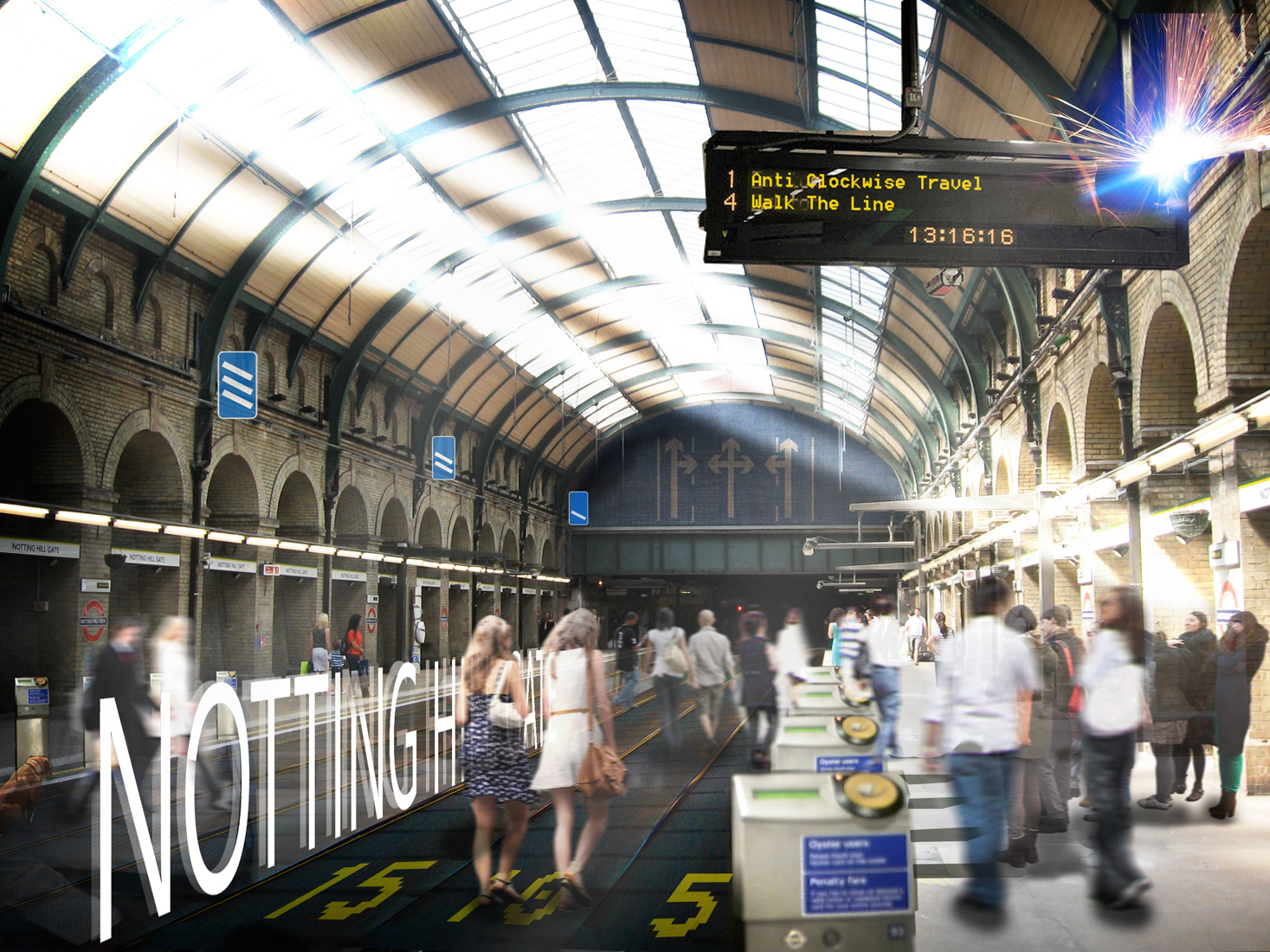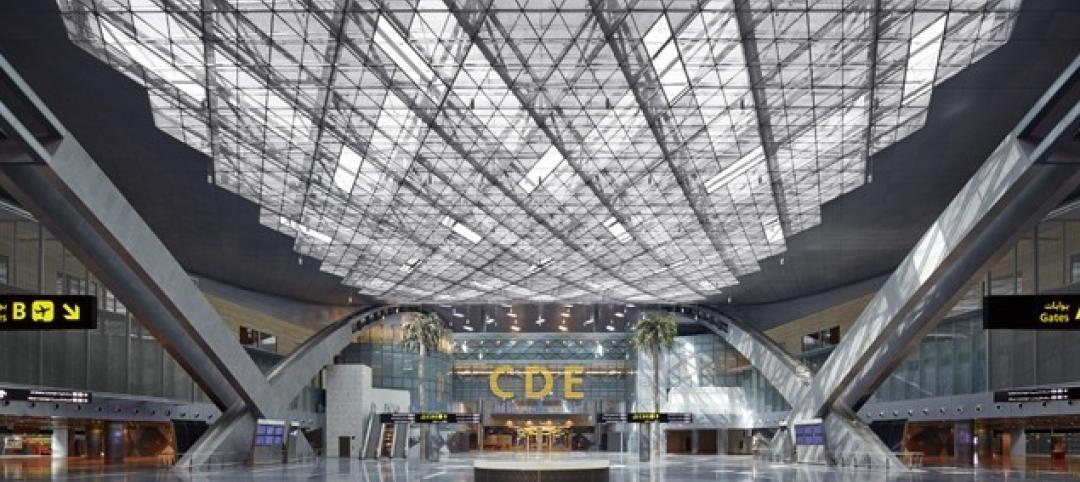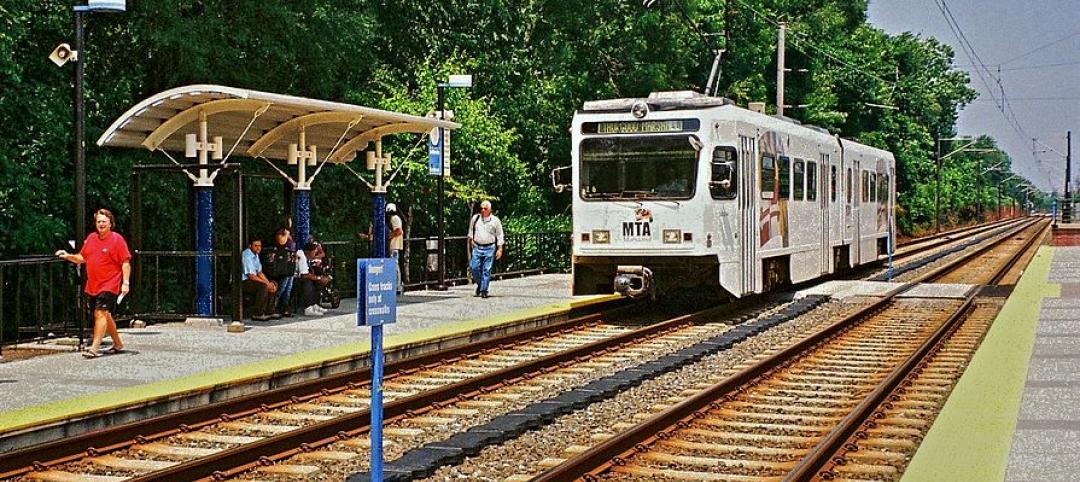London Underground’s Circle Line could be remade into a 17-mile-long moving sidewalk.
Dezeen reports that architecture firm NBBJ pitched a concept where the train service would be removed and three sets of "travelators," as they are called, would be installed. The walkways would run next to each other and operate at three speeds, from the low speed of 3 to 9 mph to the maximum speed of 15 mph.
NBBJ said that the plan would make transportation faster by eliminating the need to stop at stations.
The 36-station Circle carries 114 million passengers annually and has been in operation since 1863. The line runs in both directions around a loop around central London, with an extension that juts off the circuit.
The Daily Mail writes that the Circle Line has some issues. It can only hold up to eight trains at a time, and trains can only reach a top speed of 20 mph. In ideal conditions, trains complete the loop in an hour, but because of the system’s age and the amount of rider congestion, delays are frequent.
With the travelator, walking at a 3 mph clip at the 15 mph top speed will get a commuter around the loop in just 56 minutes. The walkways could hold up to 55,000 people at once.
Wired reports that all practical considerations, like price, construction, and energy usage, have yet to be determined.

Related Stories
| Dec 28, 2014
The future of airport terminal design: destination status, five-star amenities, stress-free travel
Taking a cue from the hospitality industry, airport executives are seeking to make their facilities feel more like destinations, writes HOK's Richard Gammon.
| Nov 18, 2014
New tool helps developers, contractors identify geographic risk for construction
The new interactive tool from Aon Risk Solutions provides real-time updates pertaining to the risk climate of municipalities across the U.S.
| Oct 16, 2014
Henning Larsen Architects to design train station for planned Danish town
Danish firm Henning Larsen Architects won Frederikssung municipality’s architecture competition for a regional train station in the planned city of Vinge—Denmark’s largest urban development.
| Oct 16, 2014
Perkins+Will white paper examines alternatives to flame retardant building materials
The white paper includes a list of 193 flame retardants, including 29 discovered in building and household products, 50 found in the indoor environment, and 33 in human blood, milk, and tissues.
| Oct 15, 2014
Harvard launches ‘design-centric’ center for green buildings and cities
The impetus behind Harvard's Center for Green Buildings and Cities is what the design school’s dean, Mohsen Mostafavi, describes as a “rapidly urbanizing global economy,” in which cities are building new structures “on a massive scale.”
| Oct 12, 2014
AIA 2030 commitment: Five years on, are we any closer to net-zero?
This year marks the fifth anniversary of the American Institute of Architects’ effort to have architecture firms voluntarily pledge net-zero energy design for all their buildings by 2030.
| Oct 3, 2014
New survey tracks Americans’ attitudes towards transit use
A record 10.7 billion rides were taken on public transit in the United States last year. And a national survey of Americans finds that the speed, reliability, and cost, more than any other factors, determine people’s willingness and frequency of use.
| Sep 24, 2014
Architecture billings see continued strength, led by institutional sector
On the heels of recording its strongest pace of growth since 2007, there continues to be an increasing level of demand for design services signaled in the latest Architecture Billings Index.
| Sep 22, 2014
4 keys to effective post-occupancy evaluations
Perkins+Will's Janice Barnes covers the four steps that designers should take to create POEs that provide design direction and measure design effectiveness.
| Sep 22, 2014
Sound selections: 12 great choices for ceilings and acoustical walls
From metal mesh panels to concealed-suspension ceilings, here's our roundup of the latest acoustical ceiling and wall products.
















